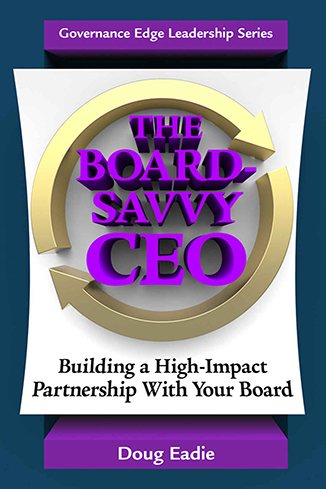An extremely busy CEO I worked with, who loved wielding the pen and was quite proficient at it, was regularlyemailing her board chair beautifully crafted issue papers that were a model of how to succinctly summarize issues and home in on the pros and cons of particular courses of action. She made every word count in her meticulously structured analyses, knowing that her chair didn’t have the time or patience to wade through excess verbiage. Possessing a healthy ego, this CEO was also very happy to share the limelight with her chair, which is why she talked him into keynoting a regional conference their nonprofit economic development corporation was hosting. Unfortunately, her board chair infinitely preferred sitting down face-to-face to work through issues, rather than reading briefing papers, no matter how logical and well written. And her chair was far better at behind the scenes negotiation than delivering formal comments at the podium, which is why he really resented his CEO’s pressuring him into keynoting the conference, which turned out to be an embarrassing experience. These are just two of several issues that have stuck in my mind in the two years since facilitating a work session of this board chair and CEO, whose relationship had frayed so badly by the time we met that it was dangerously close to being irreparable.
This true story has a happy ending since the CEO and her chair both recognized that their working together was critical to the success of their nonprofit’s mission, which they passionately believed in. But, thinking back, I’m amazed that an otherwise highly capable CEO had let such a high-stakes relationship come so close to the breaking point. As CEOs Wendy Kavanagh and Frank Rudd of the Georgia and Florida Societies of Association Executives make clear in their new podcast for extraordinaryceo.com, this need not have happened.
Wendy and Frank agree that one of their top-tier CEO responsibilities is to take the lead in building a close, positive, and productive relationship with their board chair. And one of the most important techniques they both employ in cementing the board chair-CEO working relationship is to get to know their chair really well as early in their new relationship as feasible, in terms of both the chair’s strengths and weaknesses and communication style.
After you’ve listened to Wendy and Frank’s podcast, you’re invited to post a comment sharing your experience in board chair-CEO partnership building. And we hope that you’ll share the link to this post with your colleagues around the country.





